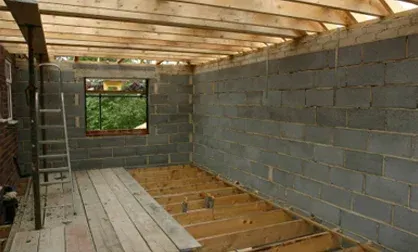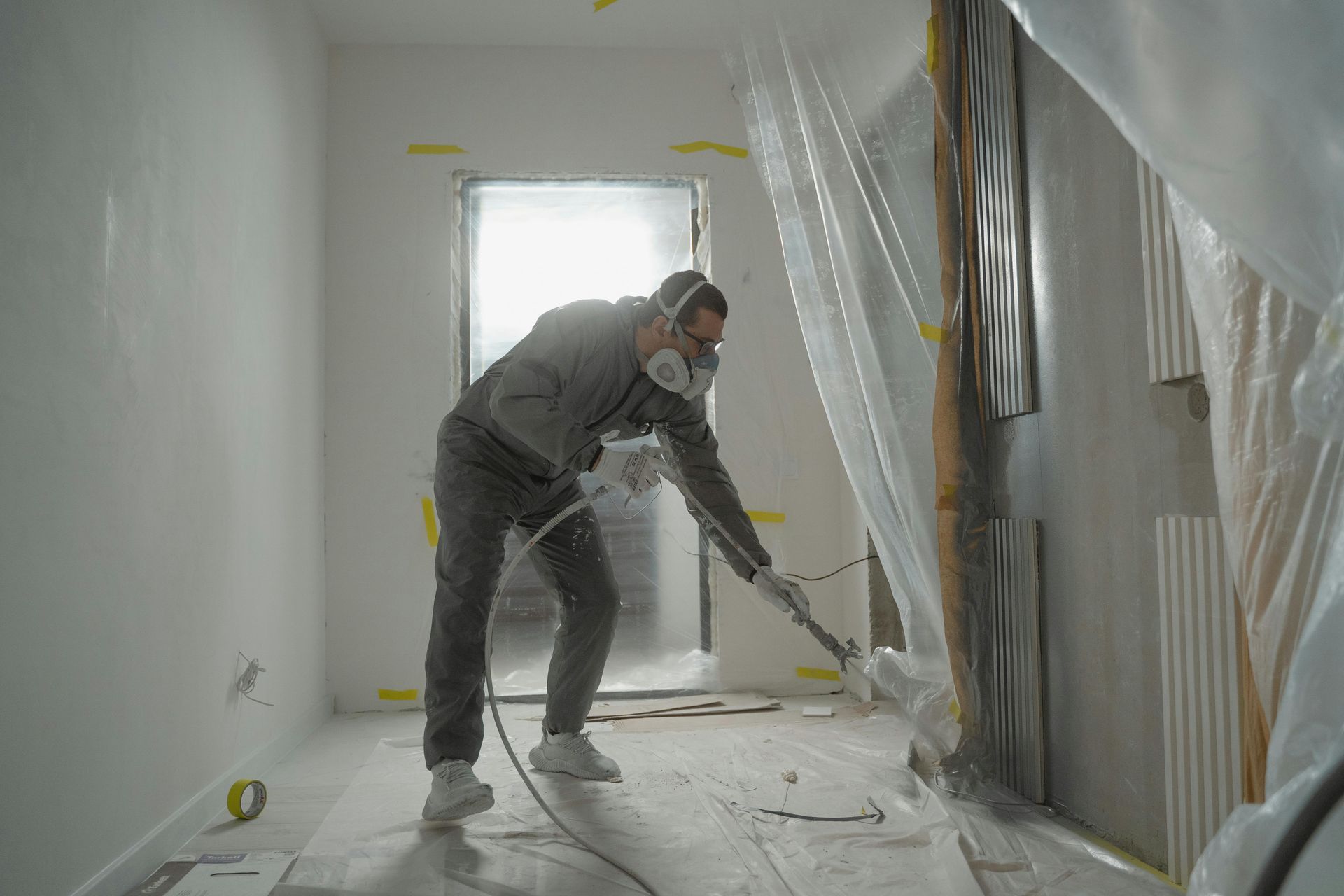
Does Homeowners Insurance Cover Structural Damage?
Homeowners insurance is a safety net for your biggest investment—your home. This guide breaks down what your insurance covers, especially structural damage. We'll also highlight what else is typically included in a policy, so you know exactly what to expect. Whether you're buying a new home or checking your current policy, knowing these details helps you make smart decisions about coverage.
What is Homeowners Insurance?
Homeowners insurance is a policy that helps protect you financially if something happens to your home or belongings. It’s like a shield against unexpected events that could cost you a lot of money.
How Does Homeowners Insurance Work?
When you buy a homeowners insurance policy, you pay a premium to the insurance company. In return, they promise to cover certain types of damage or loss. If something covered by your policy happens—like a fire or a storm—the insurance company helps pay for repairs or replacement.
What Types of Coverage Does Homeowners Insurance Offer?
Homeowners insurance typically includes several key types of coverage:
- Dwelling Coverage: This protects the structure of your home, including the walls, roof, and built-in appliances, from covered events like fire or wind damage.
- Personal Property Coverage: This covers your belongings, such as furniture, electronics, and clothing, if they're damaged or stolen.
- Liability Coverage: If someone gets hurt on your property or you accidentally damage someone else's property, this part of your policy can help cover legal fees and medical expenses.
- Additional Living Expenses (ALE): If your home becomes uninhabitable due to a covered event, ALE covers the costs of temporary housing and other living expenses.
Each of these coverages has limits, which are the maximum amounts the insurance will pay out. It's important to review these limits to make sure they’re enough to cover your needs.
Does Homeowners Insurance Cover Structural Damage?
What Constitutes Structural Damage?
Structural damage refers to any harm that affects the core parts of your home, like the foundation, walls, roof, and supporting beams. This kind of damage can compromise the safety and stability of your house, so it's important to know if your insurance will cover it. For more information on identifying these issues, check out our detailed guide on common structural problems, signs, and solutions.
When is Structural Damage Covered by Homeowners Insurance?
Homeowners insurance usually covers structural damage caused by specific events, known as perils. Here are some common scenarios where structural damage might be covered:
- Fire: If a fire damages the structure of your home, your policy will likely cover the repair costs.
- Windstorms and Hail: Damage from strong winds or hail is often included, meaning repairs to roofs or siding can be covered.
- Vandalism: If someone deliberately damages your home, homeowners insurance typically covers the repairs.
- Falling Objects: If something like a tree falls and damages your house, the repairs may be covered.
It's essential to read your policy carefully to understand what perils are covered and under what conditions. Not all structural damage is automatically covered, so knowing the specifics of your policy can save you from surprises.
What Structural Damage is Not Covered?
What Are the Common Exclusions?
While homeowners insurance covers many types of structural damage, there are several exclusions to be aware of. Understanding these can help you avoid unexpected costs:
- Wear and Tear: Insurance doesn’t cover damage caused by normal wear and tear. For instance, if your roof deteriorates over time, repairs are usually not covered.
- Neglect and Maintenance Issues: If you fail to maintain your home properly, leading to damage, this is not covered. For example, ignoring a small leak that turns into significant water damage might leave you paying out of pocket.
- Floods and Earthquakes: Standard policies usually exclude damage from floods and earthquakes. To protect against these, you may need separate flood or earthquake insurance.
- Pest Infestations: Damage caused by pests like termites is typically not covered because it’s considered preventable through regular maintenance.
- Certain Natural Disasters: Depending on where you live, certain natural disasters like hurricanes or tornadoes might require additional coverage.
How Can You Ensure Coverage for Excluded Damage?
To protect your home against excluded damage, consider these options:
- Purchase Additional Coverage: You can often add riders or endorsements to your policy to cover specific risks like floods or earthquakes.
- Regular Maintenance: Keep up with home maintenance to prevent issues that aren’t covered, like pest infestations or gradual damage.
- Review Your Policy Annually: Regularly check your policy to make sure it aligns with your current needs and risk factors.
Understanding what isn’t covered by your homeowners insurance helps you take proactive steps to protect your home from unexpected expenses.
How to File a Claim for Structural Damage?
What Steps Should You Take to File a Claim?
Filing a claim for structural damage can be straightforward if you follow these steps:
- Assess the Damage: Before contacting your insurance company, take a moment to assess the damage. Make sure it’s significant enough to file a claim. Sometimes, the repair costs might be less than your deductible, so filing a claim wouldn’t be beneficial.
- Document Everything: Take clear photos and videos of the damage from different angles. This documentation is crucial for your insurance company to evaluate the extent of the damage.
- Contact Your Insurance Company: Notify your insurance company as soon as possible. Many policies require prompt reporting of damage to ensure coverage.
- Fill Out Claim Forms: Your insurance company will provide forms to fill out. Make sure to complete these accurately and provide any required documentation.
- Schedule an Adjuster Visit: Your insurer will likely send an adjuster to inspect the damage. Be prepared to show them the affected areas and discuss what happened.
- Get Repair Estimates: Obtain estimates from licensed contractors to understand the repair costs. This can help you negotiate with the insurance company if needed.
- Review Your Settlement: Once your claim is approved, review the settlement offer from your insurance company. Ensure it covers all necessary repairs and discuss any discrepancies with your insurer.
What Documentation is Needed?
Having the right documentation can speed up the claim process and increase your chances of a successful settlement:
- Photos and Videos: Visual evidence of the damage.
- Receipts and Invoices: Proof of purchase for any damaged items or previous repairs that might affect the claim.
- Repair Estimates: Quotes from contractors detailing the cost of repairs.
- Policy Documents: Your insurance policy and any relevant endorsements or riders.
Filing a claim can seem daunting, but staying organized and following these steps can help ensure a smooth process and maximize your coverage.
What Does Homeowners Insurance Cover?
How Does Coverage Extend Beyond Structural Damage?
Homeowners insurance offers protection for various aspects of your home and personal belongings. Here’s what else is typically covered:
- Personal Property: Your insurance policy generally covers personal belongings like furniture, electronics, and clothing if they’re damaged or stolen. This coverage often extends to items outside your home, such as in your car or while traveling.
- Liability Coverage: If someone gets hurt on your property or you accidentally cause damage to someone else’s property, your liability coverage helps pay for legal fees and medical expenses. This includes accidents involving your family members and pets.
- Additional Living Expenses (ALE): If your home is damaged and becomes uninhabitable, ALE helps cover the cost of temporary housing, meals, and other living expenses until you can return home. This is especially helpful during extensive repairs.
What Additional Coverage Options are Available?
While standard homeowners insurance covers a lot, you might need extra protection depending on your situation:
- Flood Insurance: If you live in a flood-prone area, consider getting a separate flood insurance policy, as standard homeowners insurance typically excludes flood damage.
- Earthquake Insurance: For those in earthquake-prone regions, adding earthquake coverage is wise, as earthquakes are generally not covered.
- Personal Property Riders: If you own valuable items like jewelry, art, or collectibles, you might need additional coverage beyond the standard policy limits.
- Home Office Insurance: If you run a business from home, consider additional coverage to protect your equipment and business liability.
Homeowners insurance provides a wide safety net, but understanding its scope helps you ensure you’re fully protected against potential risks.
How Can You Maximize Your Homeowners Insurance?
Understanding your homeowners insurance policy is key to protecting your home and finances. Here are some tips to help you make the most of your coverage:
Why is Regular Policy Review Important?
- Keep Your Coverage Up-to-Date: Life changes, like renovations or acquiring valuable items, might affect your coverage needs. Reviewing your policy regularly ensures that you have adequate protection.
- Check for Discounts: Many insurance companies offer discounts for things like installing security systems or bundling policies. Regular reviews can help you find ways to save on premiums.
- Adjust Coverage as Needed: As your circumstances change, you might need to adjust your coverage. Whether it’s increasing limits or adding riders, staying proactive ensures you’re always covered.
How Can You Protect Your Home and Budget?
- Conduct Regular Maintenance: Keeping up with home maintenance can prevent issues that aren’t covered by insurance, like wear and tear or pest infestations.
- Understand Policy Exclusions: Knowing what’s not covered helps you take steps to protect your home, whether it’s by adding additional coverage or taking preventive measures.
- Stay Organized: Keep a record of your policy documents, receipts, and photos of valuable items. This makes the claims process easier if you ever need to file one.
Protecting your home starts with understanding your homeowners insurance and ensuring your property is in top condition. If you notice any signs of structural damage or need an expert evaluation, trust the professionals at Structural Works Group.
Serving Charlotte, Concord, Gastonia, Mooresville, and Shelby, they specialize in:
- Structural Repair: Keep your home safe and sound with expert structural repair services.
- Foundation Repair: Address foundation issues before they become major problems.
- Home Inspection Repairs: Get thorough inspections and repairs to meet home inspection requirements.
- Crawlspace Remediation: Ensure your crawlspace is dry and mold-free.
- Basement Wall and Concrete Slab Repairs: Fix cracks and leaks to protect your basement and slabs.
- Wood Deck Inspection and Repair: Maintain the safety and longevity of your outdoor spaces.
- FHA, VA, and HUD Foundation Repairs: Comply with specific guidelines and keep your home in great shape.
Don't wait until minor issues become costly repairs.
Contact Structural Works Group today for reliable service and peace of mind.










